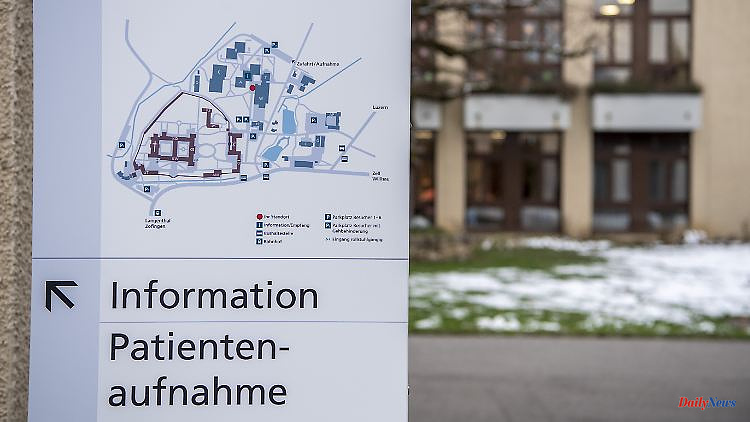The number of employees is fixed so that patients can be treated appropriately in psychiatric wards. Although this value must not be undershot, a study shows that almost half of psychiatric wards will be understaffed in 2021. This is not only due to the lack of skilled workers, says the association.
Around two out of five psychiatric hospitals in Germany deployed fewer staff in the second half of 2021 than required nationwide. This was the result of an evaluation by the Institute for Quality Assurance and Transparency in Health Care, as announced by the Central Association of Statutory Health Insurance Companies (GKV) in Berlin. Around 39 percent of the psychiatric clinics for adults and around 52 percent of the hospitals for child and adolescent psychiatry did not comply with the minimum requirements.
"In the case of minimum requirements, we speak of a red line that must not be exceeded," said GKV boss Doris Pfeiffer. The guidelines protect patients from inadequate care and staff from being overworked. With this first evaluation you finally get transparency. Further reports should show whether improvements are being made in the hospitals.
A guideline issued in 2019 regulates the minimum number of employees who must be present in the clinics in order to be able to properly care for patients. This involves doctors, psychologists as well as nursing staff, therapists and social workers. The actual staffing levels must be documented by the clinics for each ward and reported quarterly.
For the survey, the data were compared with the specifications. There were problems in meeting the requirements, especially in nursing and some therapy areas. Data from the third and fourth quarters of 2021 was used for the report. On average, 141 child and adolescent psychiatric facilities and 759 adult facilities reported their staff levels during this period.
The National Association of Statutory Health Insurance Funds criticized the fact that money from health insurance companies for staff - as has already happened in the past - may be misappropriated. In addition, the association sees in the numbers not only an expression of the shortage of skilled workers, but also a structural problem: there are basically too many people who are admitted as inpatients. Alternatives such as day clinics are not used enough. The National Association of Statutory Health Insurance Funds represents the health and long-term care insurance funds and thus also the interests of the 73 million insured vis-à-vis politicians, doctors, pharmacists and hospitals.












